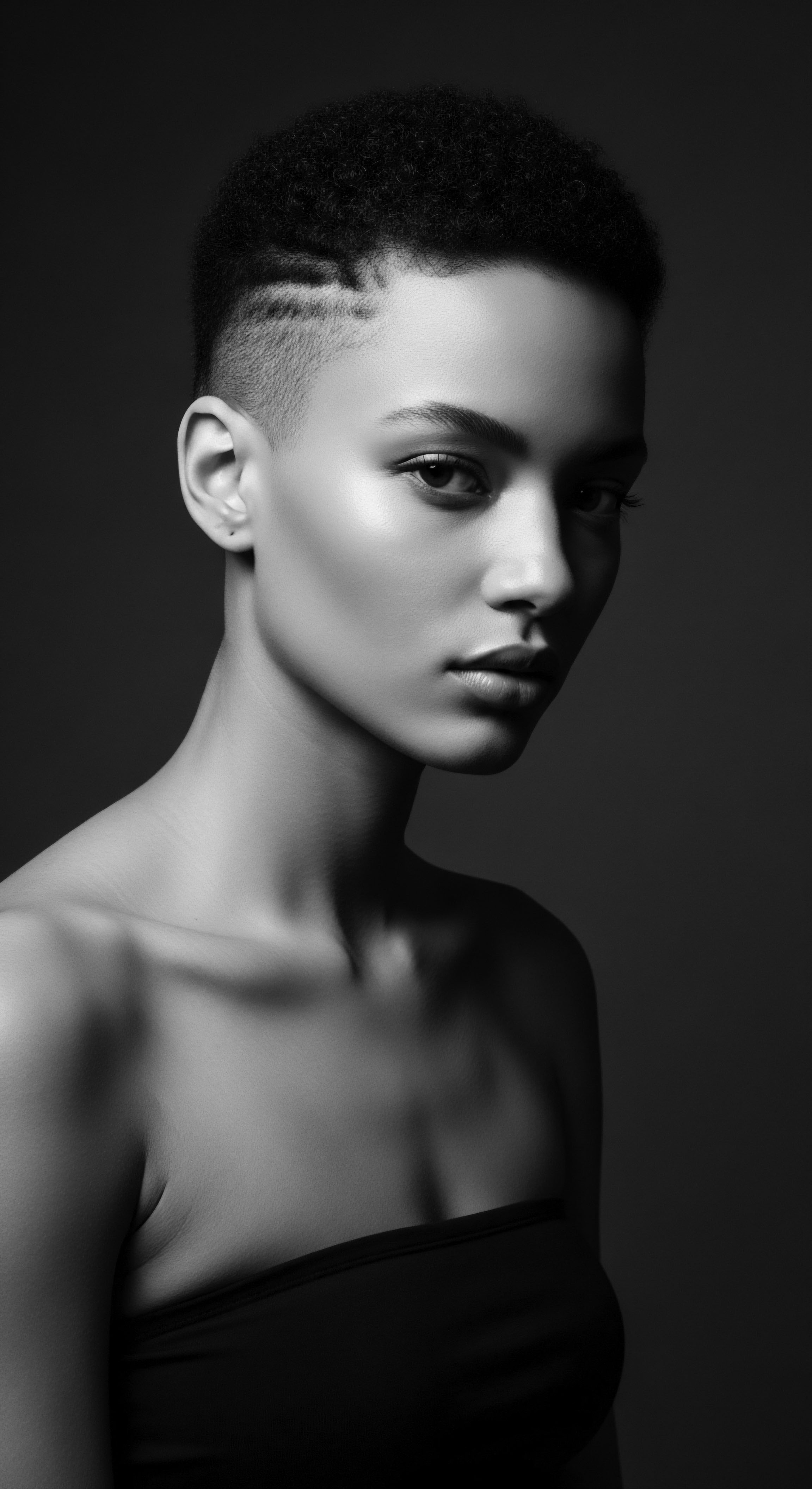
Roots
To journey into the heart of contemporary textured hair product development requires a turning of the gaze, not solely to modern laboratories, but to the deep, resonant echoes from the Source. It is a dialogue with the past, a quiet listening to the earth and the hands that once worked its offerings. We consider how ancestral ingenuity, born of necessity and wisdom, laid the very groundwork for what we now categorize, analyze, and refine.
Textured hair, in its myriad spirals and coils, holds stories—stories of resilience, of cultural affirmation, and of a profound, unbroken lineage of care. What we see today on the shelves, from the humblest moisturizer to the most advanced treatment, carries within its very formulation the essence of practices honed over centuries across continents, within communities where hair was a living archive of identity and status.

Hair’s Elemental Blueprint
Our understanding of textured hair begins with its fundamental biology, a study that reveals the intricate architecture of each strand. The hair follicle, a tiny organ nestled beneath the scalp, dictates the hair’s shape. For textured hair, this follicle is often elliptical or flattened, causing the keratin filaments to form distinct coils as they emerge. This structural difference, a biological marvel, renders textured hair more susceptible to dryness and breakage due to the uneven distribution of natural oils along its helical path.
Modern product development, then, does not merely seek to coat these strands; it aims to support this inherent biology, often by mimicking the very protective and moisturizing qualities discovered by earlier generations. Ancient cultures possessed an intuitive comprehension of this fragility. They applied oils, butters, and various plant-derived solutions, intuitively understanding the need for external moisture and protection against environmental stressors. This primal knowledge, passed down through oral tradition and lived experience, forms a foundational layer for today’s scientific approaches.
The foundational understanding of textured hair’s unique structure, a legacy of ancestral observation, shapes the core principles of modern product development.
Consider, for a moment, the classification of hair textures. While contemporary systems like Andre Walker’s widely adopted typing (1A-4C) offer a granular framework for stylists and consumers, allowing for product recommendations and a shared language, their origins sometimes hold a complex past. The concept of categorizing hair based on its curl pattern did not begin in a neutral scientific vacuum. An earlier hair typing system, for instance, emerged in the early 1900s, developed by Eugen Fischer, a German Nazi scientist and eugenicist.
He used this system in Namibia to determine “Blackness” based on hair texture, contributing to the subjugation of indigenous people (Donaldson, 2021). This historical context serves as a potent reminder that even our seemingly objective scientific tools can carry the weight of past biases, urging us to approach classification with sensitivity and a deep understanding of its socio-historical implications. Our contemporary lexicon, while striving for inclusivity, must acknowledge these origins, recognizing that the very language we use to describe textured hair has its own heritage, sometimes shadowed by the era of racial categorization and white supremacy.
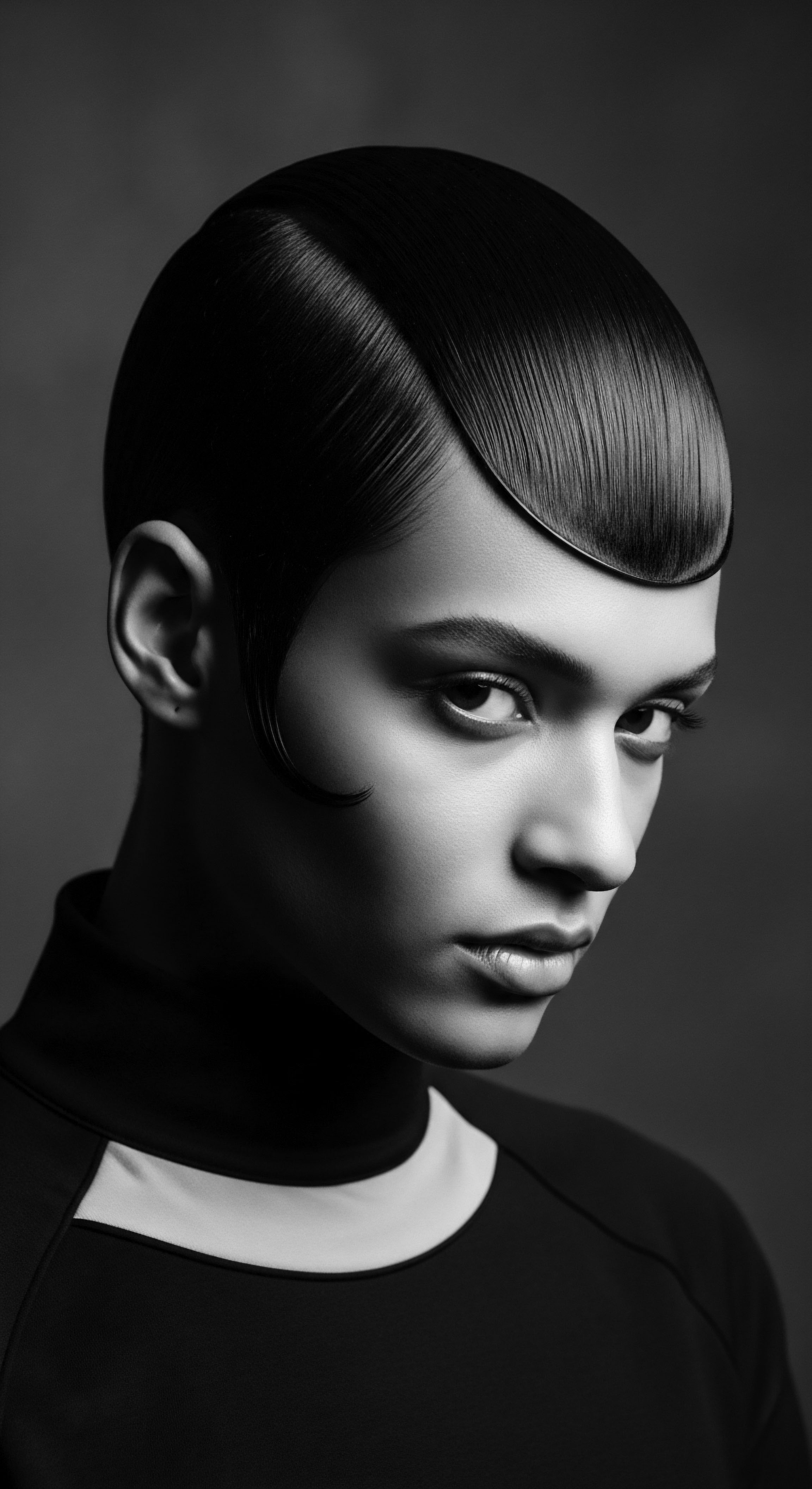
Ancient Lexicon of Textured Hair Care
The language of textured hair care, long before chemical compounds and patented formulas, was spoken through the names of plants, earth elements, and communal practices. These terms, specific to regions and peoples, conveyed deep knowledge of hair’s needs.
- Shea Butter ❉ Known as “karité” in some West African languages, extracted from the nuts of the shea tree. This staple has been used for centuries for its profound moisturizing and protective qualities against harsh environmental conditions.
- Chebe Powder ❉ Hailing from Chad, this blend of herbs, seeds, and plants has been used by Basara Arab women for centuries for length retention, forming a historical link to modern hair strengthening treatments.
- Rhassoul Clay ❉ A cleansing clay from Morocco, traditionally used as a gentle hair and scalp wash that removes impurities without stripping moisture, predating commercial shampoos.
- African Black Soap ❉ Often composed of shea butter and plantain ash, this traditional West African cleanser offers a powerful, natural alternative for hair and body purification.
These are but a few examples, each name carrying centuries of experiential wisdom. Product developers who honor this heritage seek to understand the traditional processing methods, the synergistic properties understood by ancestors, and the cultural significance of these ingredients. They acknowledge that these components are not just raw materials, but custodians of history and identity.

Hair’s Growth Cycle and Ancestral Influences
The biological cycle of hair growth, encompassing anagen (growth), catagen (transition), and telogen (rest), remains constant across hair types. Yet, environmental and nutritional factors, often deeply tied to ancestral living conditions, historically shaped hair health. Communities living off the land, with diets rich in native plants and lean protein, likely sustained optimal hair vitality through internal nourishment. Consider the Himba tribe of Namibia, who traditionally use a mixture of clay and cow fat, known as otjize, to protect their hair from sun and detangle it.
This practice highlights not only a resourceful use of local resources but also an acute awareness of environmental impacts on hair. Contemporary product development, in turn, looks to incorporate nutrient-rich plant extracts, vitamins, and minerals that mirror the benefits of these ancestral diets and protective rituals. The quest for healthy hair, then and now, extends beyond topical application; it is a holistic endeavor, recognizing the interconnectedness of internal well-being and external presentation, a principle understood implicitly by our forebears.

Ritual
The tending of textured hair has always been an art, a ritual, a living tradition passed through generations. It is in the rhythmic hands braiding, the careful sectioning for twists, the deliberate application of a concoction that we see the direct application of historical knowledge. Product development today does not merely create a tool; it provides an extension of these enduring practices, often seeking to enhance or make more accessible the methods our ancestors perfected out of sheer ingenuity and a profound reverence for their crowns. The very act of caring for textured hair holds cultural weight, a legacy of practices that were, at times, a form of silent resistance or vibrant self-expression.

Protective Styling ❉ What Ancient Techniques Guide Modern Protective Product Design?
Protective styling, a cornerstone of textured hair care, finds its roots deep in African heritage. Intricate braids, twists, and locs were not merely aesthetic choices; they served vital practical and symbolic purposes. In pre-colonial African societies, hairstyles conveyed messages about age, marital status, ethnic identity, and social standing. They protected hair from environmental damage, especially during arduous labor or long journeys.
For example, during the transatlantic slave trade, some enslaved African women, particularly rice farmers, braided rice seeds into their hair as a means of survival and cultural preservation (BLAM UK CIC, 2022). These styles were adapted with limited resources, using headwraps to prolong styles between washes (Colleen, 2020; Hype Hair, 2023).
Modern protective styling products—from rich leave-in conditioners to styling creams and edge controls—are formulated to support these ancient techniques. They aim to provide moisture retention, reduce friction, and strengthen the hair shaft, echoing the ancestral goals of protecting the hair from breakage and environmental stress. The enduring need for hair protection, particularly when hair is manipulated into styles that limit daily exposure and manipulation, directly informs the viscosity, humectant content, and conditioning agents found in modern products.

Natural Styling ❉ How Do Ancestral Methods Shape Contemporary Definition Products?
The quest for definition and vibrancy in textured hair is as old as the hair itself. Ancestral methods focused on using naturally occurring substances to enhance curl patterns and maintain a healthy appearance. Oils like coconut, argan, and shea butter were applied for shine and moisture.
Plant extracts provided hold and encouraged curl clumping. In some African communities, certain clays were used for cleansing without stripping, allowing natural curl patterns to remain intact.
Today’s curl creams, custards, and gels, designed to define and hold textured hair, draw direct parallels to these historical practices. Their formulations often feature humectants to attract moisture, emollients to soften, and film-forming polymers (some derived from plants, others synthetic) to set the curl pattern. This is a scientific validation of the intuitive ancestral understanding that well-hydrated, protected strands exhibit their natural definition with greater clarity. The understanding of how particular plants provided natural “hold” without harshness guides the search for gentle, effective ingredients in today’s formulations.
From ancient protective braids to modern curl-defining creams, historical styling practices continue to guide the functionality and desired outcomes of textured hair products.
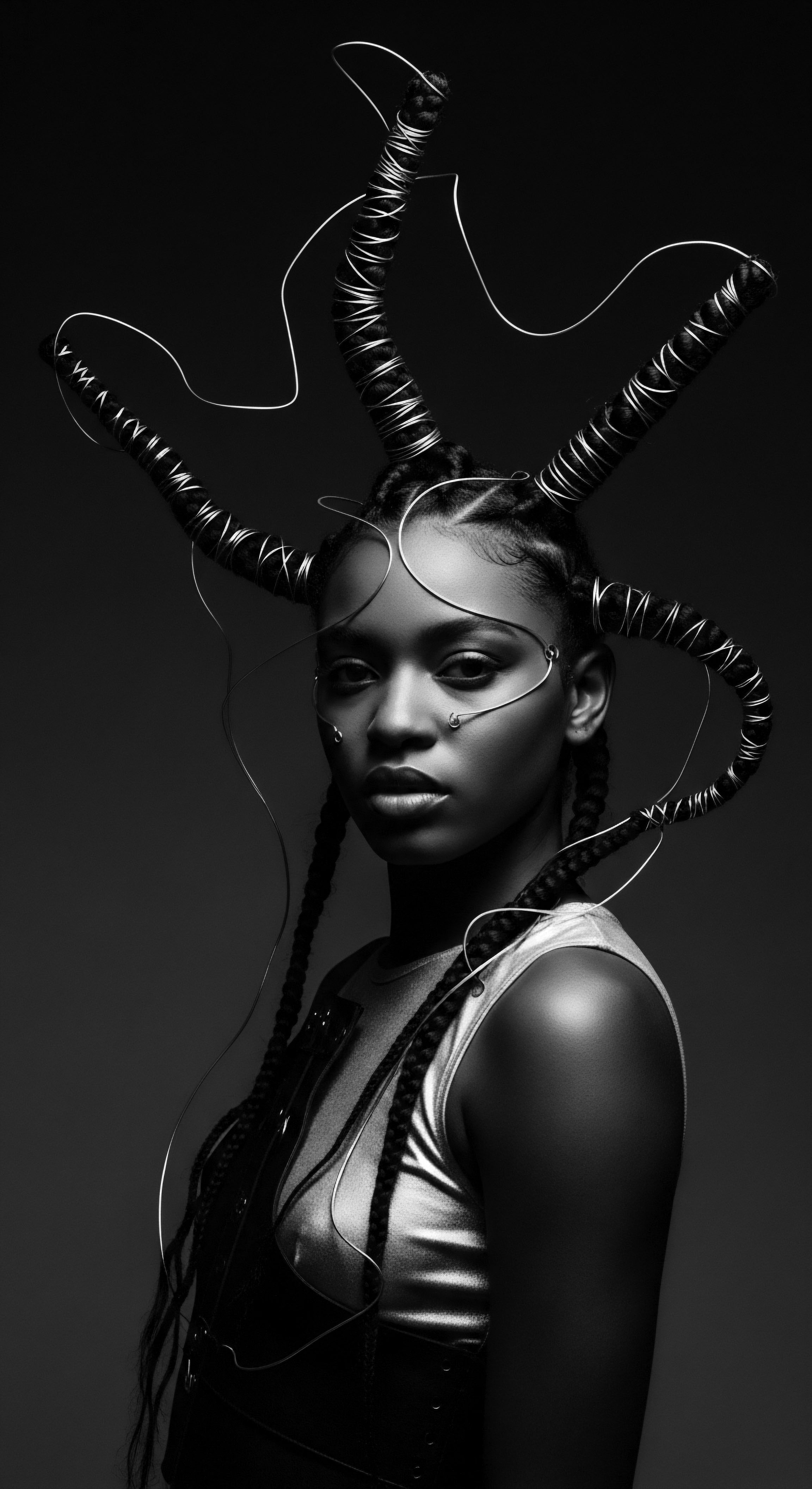
Wigs and Hair Extensions ❉ Tracing Their Cultural and Historical Utility
The use of wigs and hair extensions holds a long, fascinating lineage, particularly within Black and mixed-race communities. In ancient Egypt, wigs were not only indicators of wealth and status but also provided protection from the sun and were part of elaborate styling. Across various African cultures, adding hair or using extensions was customary for creating complex styles, signifying social standing, and participating in ceremonial life. This long history demonstrates that enhancing or altering one’s hair with supplemental strands is not a recent trend, but a practice deeply embedded in cultural heritage.
Contemporary products related to wigs and extensions—from wig shampoos and conditioners to specialized adhesives and hair extensions themselves—owe their existence to this enduring demand. The development of lighter, more breathable wig caps, realistic synthetic fibers, and gentle adhesives reflects a modern adaptation of historical needs. The emphasis remains on comfort, realism, and the ability to protect one’s natural hair underneath, mirroring the protective and expressive functions seen in ancient times.
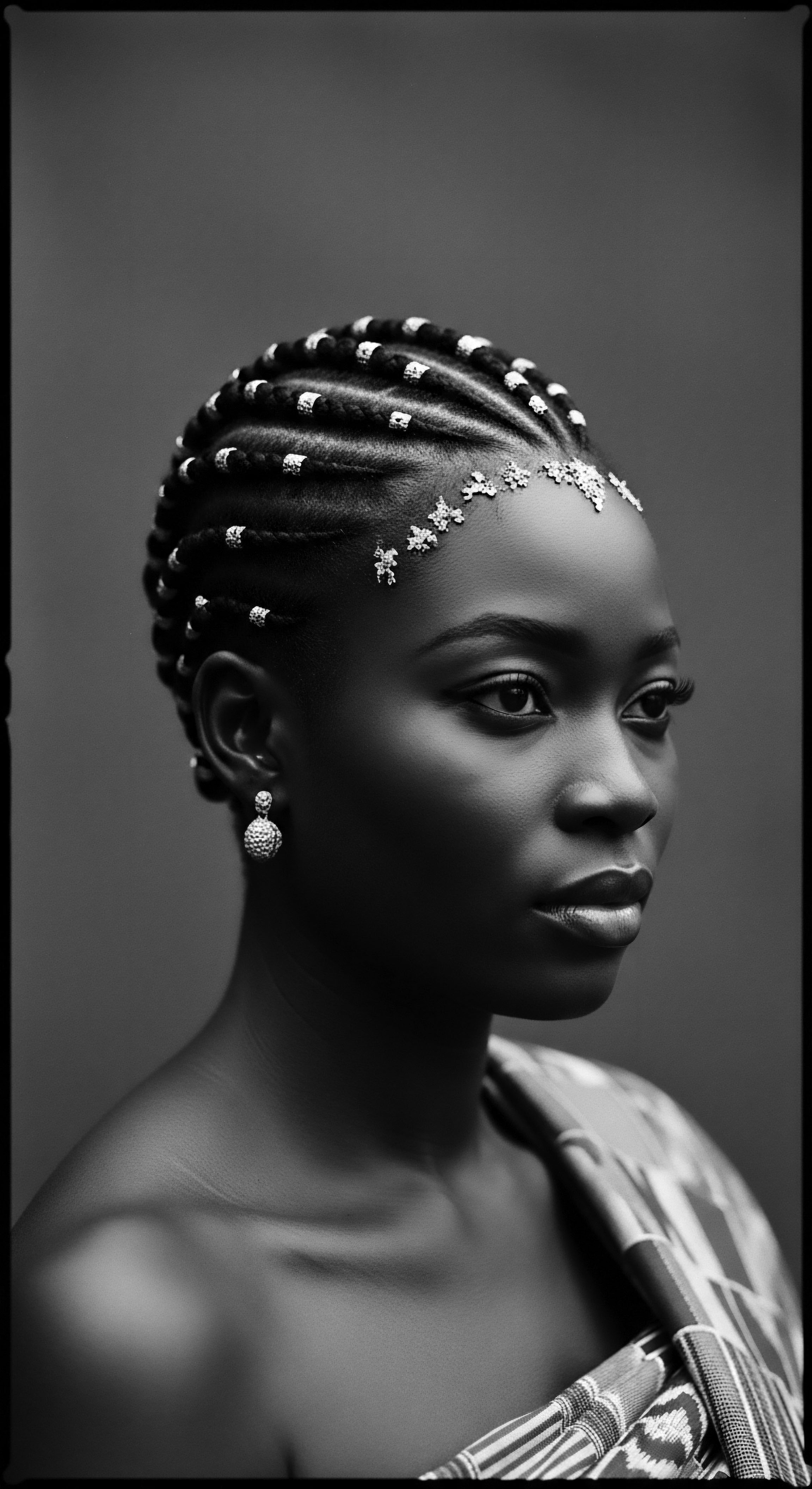
Heat Styling ❉ A Reckoning with Historical Harm and Modern Solutions
The history of textured hair also includes a period marked by the pursuit of straightness, often driven by Eurocentric beauty standards. The invention of metal hot combs in the 1880s and their popularization by pioneers like Madam C.J. Walker in the early 1900s allowed for pressing and curling textured hair.
While these tools offered new styling possibilities, the associated products and techniques could be abrasive, leading to burns, breakage, and hair loss if misused (Colleen, 2020). This era represents a complex chapter, where innovation intersected with societal pressure.
Modern heat styling products—heat protectants, smoothing serums, and thermal reconditioners—emerged from a recognition of these historical challenges. The scientific understanding of heat damage (protein denaturation, cuticle lifting) now informs formulations that shield the hair shaft. Ingredients like silicones, hydrolyzed proteins, and specialized polymers create a barrier, distributing heat more evenly and minimizing moisture loss. This scientific progress allows for greater styling versatility while striving to mitigate the harm that historical methods sometimes caused, reflecting a collective learning from past practices and a commitment to hair health.
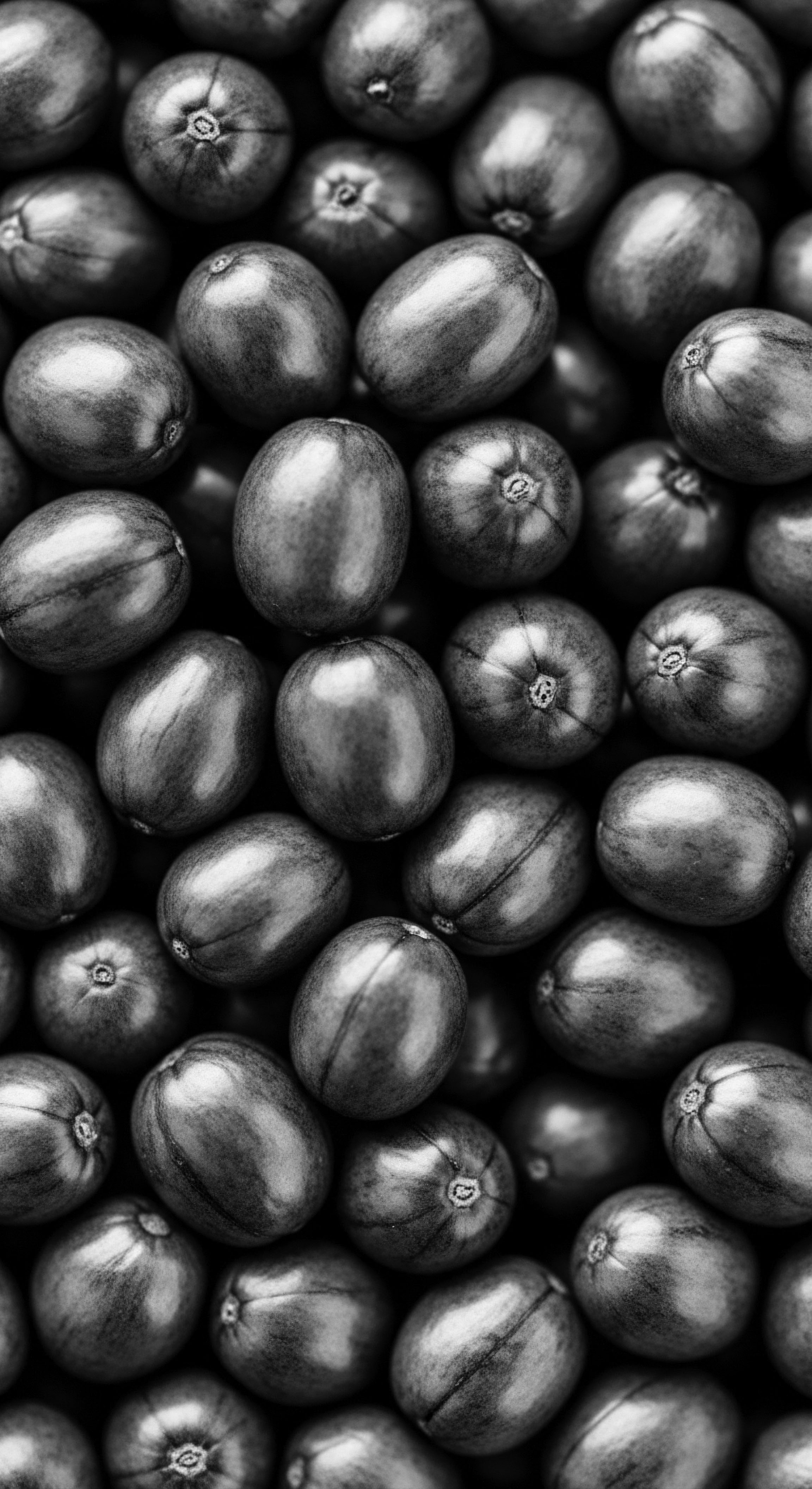
The Textured Hair Toolkit ❉ Traditional Instruments and Their Modern Counterparts
The tools used for textured hair care have evolved from simple, natural implements to highly engineered devices. Yet, the principles guiding their design often remain consistent with ancestral needs.
- Combs ❉ Early combs were often carved from wood, bone, or ivory, used for detangling and styling. Today, wide-tooth combs and flexible detangling brushes echo this function, designed to glide through curls without snagging.
- Hair Threading Tools ❉ Among the Yoruba people of Nigeria, dating back to the 15th century, hair threading was a key method for styling and protecting hair. It involved wrapping hair tightly with thread. Modern practices like African threading still exist, inspiring low-tension styling aids.
- Oiling Vessels ❉ Ancestral care involved applying oils and butters by hand or with simple containers. Modern product packaging, with its precise applicators and pumps, aims to deliver these nourishing ingredients efficiently, drawing from the need for controlled, even distribution.
The continuity is striking ❉ whether a natural fiber for application or a precisely engineered nozzle, the tool serves the enduring purpose of nourishing, shaping, or protecting the hair. This deep connection to heritage informs the design of even the most technologically advanced hair tools, ensuring they remain congruent with the physical demands and aesthetic desires of textured hair.

Relay
Our journey through the historical landscape of textured hair care culminates in the contemporary practices that serve as a relay, passing the torch of ancestral wisdom into the modern era. This section examines how product development for textured hair is deeply informed by holistic care philosophies, nighttime rituals, and traditional approaches to problem-solving, all rooted in a profound reverence for heritage and the unique needs of Black and mixed-race experiences. It speaks to a conscious merging of ancient knowledge with modern scientific understanding, resulting in products that truly resonate with the ‘Soul of a Strand.’

Crafting Personalized Hair Regimens ❉ A Dialogue with Ancestral Wellness?
The contemporary emphasis on personalized hair regimens, tailoring products and routines to individual needs, finds a clear precursor in ancestral wisdom. Across diverse African cultures, hair care was rarely a one-size-fits-all endeavor. It was intimately connected to an individual’s identity, status, and environment. Practices varied by tribe, climate, and available resources.
The Yoruba, for instance, used specific hairstyles to signify marital status or social rank, necessitating distinct care routines (Smith, 2023). This inherent personalization was a lived reality, not a marketing strategy.
Modern product lines that cater to specific curl types, porosity levels, or scalp conditions directly descend from this historical understanding. When we select a hydrating conditioner for low porosity hair or a protein treatment for high porosity, we are, in a sense, echoing the ancestral observation that different hair textures and conditions respond best to particular interventions. This contemporary specialization is a scientific validation of a long-standing tradition of tailored care. The richness of botanical ingredients, once sourced locally and intuitively combined, now undergoes rigorous scientific analysis to understand their molecular benefits, allowing for formulations that are both ancestrally inspired and scientifically optimized.
Contemporary customized hair care regimens, far from being a modern invention, echo the individualized approaches to hair maintenance found in diverse ancestral traditions.

The Nighttime Sanctuary ❉ The Historical Wisdom of Bonnets and Protection
The practice of covering hair at night, particularly with bonnets, has a profound history rooted in the protection and preservation of textured hair. While European women in the mid-1800s wore sleep caps for warmth, headwraps and bonnets have far deeper ties to African heritage. Historically, African communities used head coverings to protect hair from the elements, maintain intricate hairstyles, and convey social status. During enslavement in the Americas, these coverings took on another layer of significance ❉ they became a crucial tool for preserving hair from the harsh conditions of labor and a symbol of resilience and identity.
Laws were even enacted to force Black women to cover their hair in public, turning a practical and culturally rich practice into a tool of subjugation. Yet, Black women transformed this into an act of creative and cultural expression, adorning them with beautiful fabrics and embellishments (Donaldson, 2022).
Today’s silk and satin bonnets, pillowcases, and scarves directly serve the same purpose ❉ minimizing friction, preventing moisture loss, and protecting styled hair. The science now confirms what generations understood through practice ❉ smooth fabrics reduce breakage and frizz, maintaining the hair’s integrity. Contemporary product development for nighttime care includes leave-in conditioners and hydrating mists designed to be absorbed during sleep, working in harmony with the physical barrier of the bonnet. This seamless integration of historical practice with scientific understanding underscores how deeply heritage guides the very rituals that safeguard textured hair health.

Ingredient Journeys ❉ What Traditional Botanicals Inform Modern Formulations?
The ingredient deck of many contemporary textured hair products reads like an ethnobotanical record, a testament to the enduring wisdom of ancestral practices. Before laboratories could synthesize complex molecules, communities relied on the bounty of their natural environments for hair care solutions.
| Traditional Ingredient Shea Butter |
| Ancestral Use and Region Deeply moisturizing and protective in West Africa, used for centuries to nourish hair and skin. |
| Modern Product Application Conditioners, styling creams, leave-ins for moisture and barrier protection. |
| Traditional Ingredient Coconut Oil |
| Ancestral Use and Region A staple in Ayurvedic practices in India for hair health, promoting strength and shine. |
| Modern Product Application Pre-shampoo treatments, deep conditioners, hair masks for penetration and lubrication. |
| Traditional Ingredient Marula Oil |
| Ancestral Use and Region "Liquid gold" from Southern African trees, used for its antioxidants and moisturizing benefits. |
| Modern Product Application Lightweight oils, serums for shine, environmental protection. |
| Traditional Ingredient Rice Water |
| Ancestral Use and Region Used by the Yao women in China for centuries for hair strength and growth. |
| Modern Product Application Shampoos, rinses, and treatments for strengthening hair and improving elasticity. |
| Traditional Ingredient Chebe Powder |
| Ancestral Use and Region Traditional Chadian mix for length retention, applied as a paste. |
| Modern Product Application Hair masks, leave-in treatments aimed at strengthening and reducing breakage. |
| Traditional Ingredient Aloe Vera |
| Ancestral Use and Region Used by Native American tribes and in Latin America for cleansing and scalp soothing. |
| Modern Product Application Gels, cleansers, scalp treatments for soothing and hydration. |
| Traditional Ingredient These ingredients represent a profound continuity, showcasing how ancestral understanding of nature's offerings continues to shape textured hair product innovation. |
The journey of these ingredients from traditional remedies to globally distributed products involves a scientific lens that validates ancestral claims. Modern biochemical analysis confirms, for example, that fermented rice water significantly increases the bioavailability and potency of nutrients for hair health, explaining why ancient cultures observed its benefits (Rolling Out, 2025). Similarly, the fatty acid profiles of shea butter and coconut oil are now understood in terms of their ability to penetrate the hair shaft and reduce protein loss.
This is a scientific validation of knowledge gathered over millennia through observation and trial. The goal today is to present these heritage ingredients in stable, effective formulations, honoring their historical power while ensuring modern standards of safety and efficacy.

Textured Hair Problem Solving ❉ How Do Ancestral Cures Guide Modern Solutions?
Addressing common textured hair concerns—dryness, breakage, and scalp health issues—has always been a priority. Ancestral communities devised solutions based on available flora and fauna. For dryness, various plant-based oils and animal fats were applied.
For scalp ailments, ingredients with antimicrobial properties, like certain barks, clays, or teas, were employed. The traditional use of African Black Soap for cleansing without stripping the hair of its beneficial properties is a direct ancestral response to maintaining scalp balance.
Contemporary product development for these issues often seeks to replicate or enhance these ancestral solutions. Anti-itch scalp treatments frequently incorporate traditionally soothing botanicals. Deep conditioners and hair masks use rich butters and oils known for centuries to address dryness.
The move towards sulfate-free cleansers aligns with the gentle, non-stripping nature of historical cleansing agents like rhassoul clay. This means that solutions to modern problems are often found by looking backward, recognizing the effectiveness of practices born of a deep understanding of natural remedies and the hair’s own resilience.

Holistic Influences ❉ How Ancestral Wellness Philosophies Inform Hair Health Today?
Beyond topical applications, ancestral wellness philosophies recognized the interconnectedness of overall health and hair vitality. In many African societies, hair was regarded as a spiritual antenna, the most elevated part of the body, and its health was intertwined with spiritual well-being. Practices like communal hair styling sessions served not just as grooming opportunities but as moments for social bonding, sharing wisdom, and reinforcing community ties. This holistic perspective views hair care as a ritual that nourishes not only the physical strands but also the spirit and community bonds.
Modern textured hair product development, particularly within the wellness movement, increasingly acknowledges these broader influences. Brands speak to self-care, mindful routines, and the psychological benefits of healthy hair. The rise of products focusing on scalp health—recognizing the scalp as the foundation for healthy hair growth—reflects an alignment with ancient Ayurvedic practices of scalp oiling (Shiro Abhyanga), where nourishing the scalp was central to overall hair health. This contemporary emphasis on the scalp and the overall well-being of the individual, rather than solely cosmetic results, represents a powerful relay of ancestral wisdom, reminding us that true radiance stems from a deeper, more profound sense of balance.

Reflection
The journey through the historical underpinnings of contemporary textured hair product development is a profound meditation on the enduring soul of a strand. Each coil, each twist, carries within it the memory of hands that have tended, protected, and adorned it across millennia. We find ourselves in a living library, where every ingredient, every technique, whispers stories of ingenuity and resilience passed down through vibrant lineages. The contemporary landscape of textured hair care, with its innovative formulations and diverse offerings, stands as a testament to the power of inherited wisdom.
It reminds us that our quest for healthy, beautiful hair is not a modern pursuit, but a continuation of an ancient dialogue between humanity and the earth. To understand textured hair products today, we must simply listen to the echoes of yesterday, honoring the legacy that truly makes each strand a narrative, an inheritance, and a boundless expression of self.

References
- BLAM UK CIC. (2022). The history of Black Hair.
- Colleen. (2020). The History of Textured Hair.
- Donaldson, S. (2021). The Controversial History of the Hair Typing System. Byrdie.
- Donaldson, S. (2022). The Significance and History of Bonnets. Byrdie.
- Rolling Out. (2025). The ancient haircare secret that’s backed by modern science.
- Smith, J. (2023). What Every Dermatologist Must Know About the History of Black Hair. Cutis, 112(5), 241-245.
